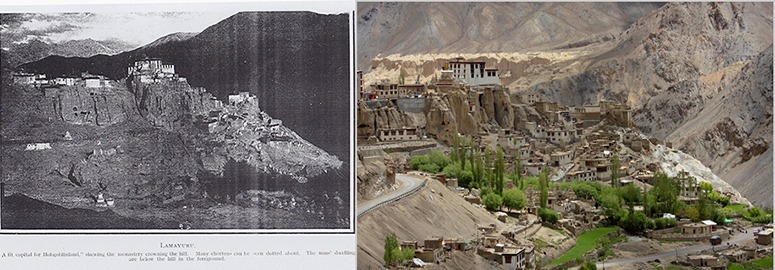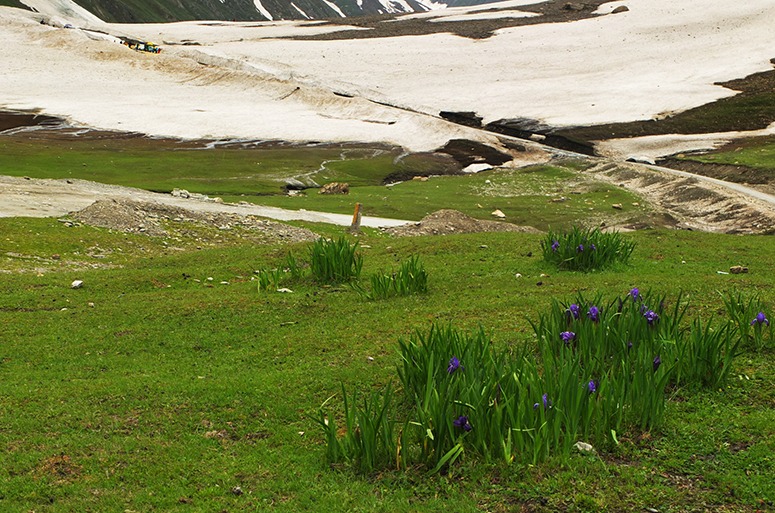
Lamayuru, in Buddhist Ladakh, (1926 and 2010)
The left photograph is from
Himalayan Tibet and Ladakh: A Description of Its Cheery Folk, Their Ways & Religion, of the Rigours of the Climate & Beauties of the Country, Its Fauna and Flora (by Adolph Reeve Heber, Mrs. Kathleen Mary Heber, Ess Ess Publications, 1926). The right-hand photograph was taken by Nevil Zaveri in 2010. What can we learn from them?
– the town’s population is growing
– traditional architecture is still favoured, but new roads and telephone poles have an ‘anywhere’ quality (they are built and funded by the Indian army)
– Lamayuru is popular with tourists, despite its remoteness
– the expansion, so far, has been on stony ground
– there is a danger of Lamayuru expanding onto its very scarce resource of agricultural land (but there is also a danger of the land being neglected, because it is cheaper to import food from other parts of India)
– either there are more poplar trees or they are being allowed to grow taller for amenity reasons
– the ‘agriculture’ in old Ladakh is closer to what we would call horticulture than to what we call agriculture but if you call the cultivated areas ‘gardens’ it must be noted that their use is to grow food plants rather than ornamental plants.
Dr Adolph Reeve Herber, who took the black and white photo was an English doctor and missionary. He and his wife were based at the Moravian School in Leh from 1912-25. The mission ran a school, which survives, but did not have much success in converting the Ladakhis to Moravian protestantism. Nor did Dr Herber find much demand for his medical skill – because the local people were so healthy. He therefore had time to study other aspects of Ladakh’s culture and environment, including its flowers: ‘At the foot of the high Kardong Pass behind Leh… to mention a few only, are found yellow Iceland poppies, Michaelmas daisies, small deep-blue gentians, forget-me-nots, forming a carpet of blue on the Zogi [
Zoji-La] stretches, but replaced by the deep blue of the borage below the Kardong, deep purple orchids, primulas in all shades of magenta and purple, cow parsley, a kind of stinging nettle, asters, saxifrage, vetches, Canterbury bells, and on the Zogi the single anemone and the tall bunched Japanese variety, even the green foxglove and the coarse edelweiss.’

Hooker’s Iris on the Zoji-La)
 With regard to garden design, I’m a great believer in the importance of beliefs – and used the word in the titles a book on the history of Asian gardens. Neil MacGregor’s Radio 4 series on Living with the Gods is therefore of great interest to me.
With regard to garden design, I’m a great believer in the importance of beliefs – and used the word in the titles a book on the history of Asian gardens. Neil MacGregor’s Radio 4 series on Living with the Gods is therefore of great interest to me.

